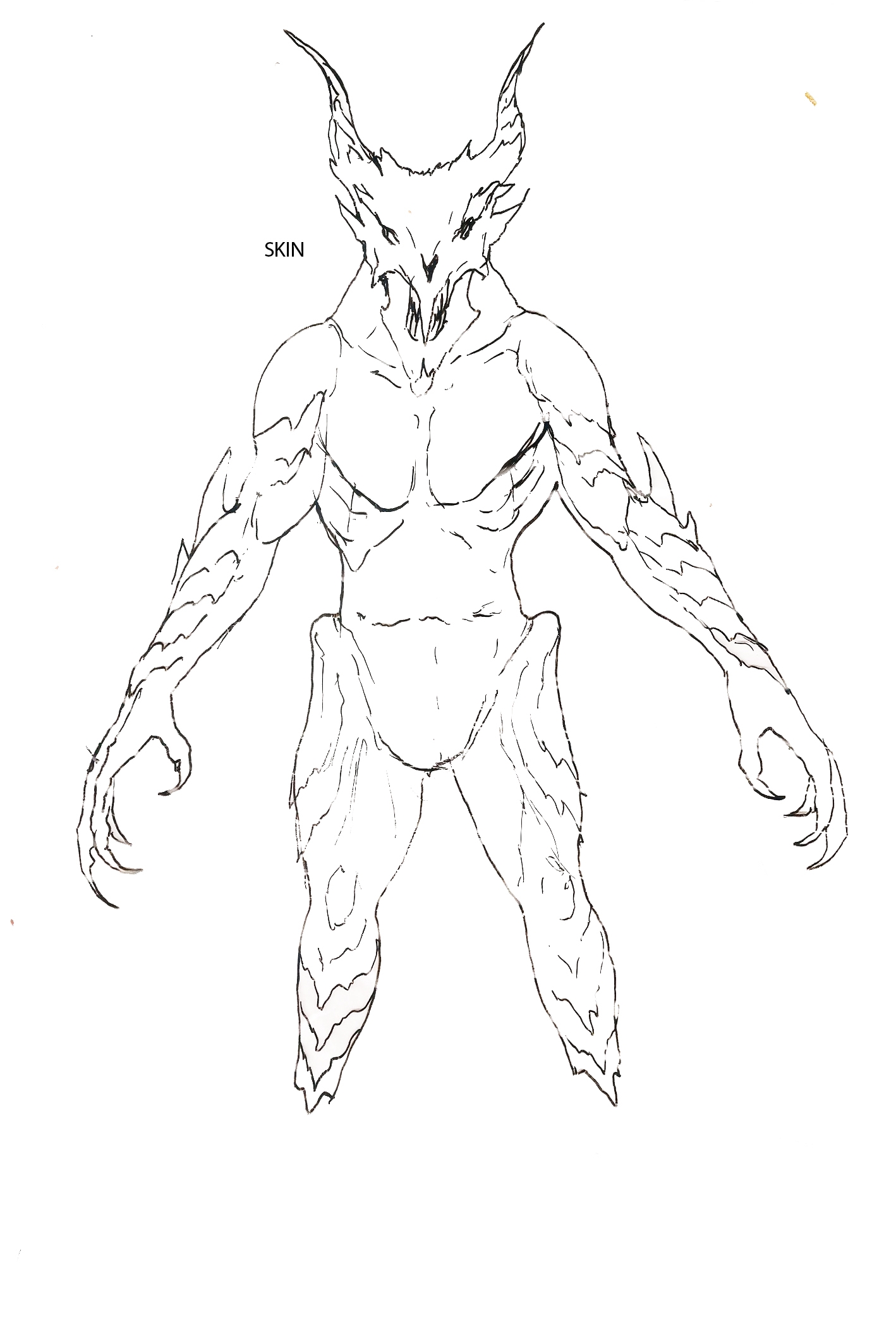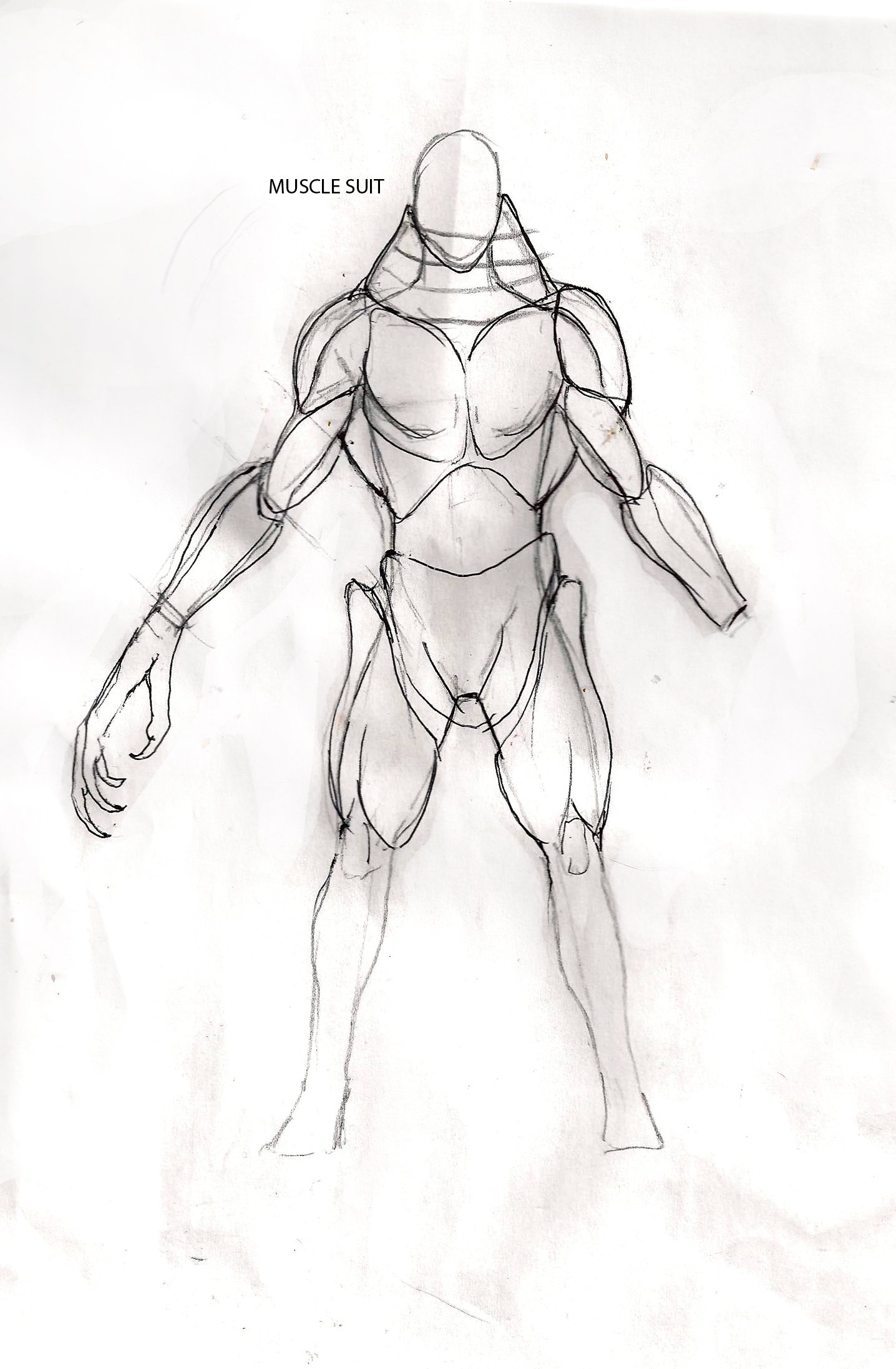Muscle Suit Fabrication: Cover, Sew & Hang Muscles - Part 2
 Chris Ellerby
Admin
Chris Ellerby
Admin
MUSCLE SUIT FABRICATION PART 2 - COVER, SEW & HANG MUSCLES
Learn how to fabricate a muscle suit with master creature effects fabricator, Ted Haines (From Dusk Till Dawn, The Muppets, The Bourne Legacy).
In Part Two of his 3-Part Webcourse series, Haines teaches you how to build up your muscle suit with both firm and soft materials, including creating a rigid foam ribcage and realistic belly fat. From there he demonstrates his time-tested techniques for covering muscles with spandex and hanging them on a body form.
Whether you need to bulk up an actor to fill out a muscular superhero costume or add realistic "under the skin" muscle movement to your animal, monster or creature characters, this webcourse series with one of Hollywood's fabrication experts will show you how to do it right.
WEBCOURSE HIGHLIGHTS:
- Carving a foam rib cage
- Covering muscles with spandex
- Sewing with an Overlock machine
- Hanging muscles on a body form
- Making & filling a belly bag
VIEW THE LESSON HERE
0
 https://www.youtube.com/watch?v=BM2REDhW9sI
https://www.youtube.com/watch?v=BM2REDhW9sI
Comments
It's a quite big volume monster and i have some technical issues i want to solve.
My question is about the foam (polyfoam or wathever i need) to make the muscular structure underneath the foam latex skin. What's the correct process i have to make to get that cores,(for inject the foam latex)?. I dont want so much foam latex volume, i need that structure with diferent hardeness for the correct movement,(with all the different kind of muscles). As an example the baron in the Doom film.The core for the foam latex is the real lifecasting of the actor?that real lifecasting but with underneath muscle sculpt?
Thanks!
This lesson focuses on the creation of a suit using foam fabrication techniques that involve taking solid blocks & sheets of foam (EVA, L200, upholstery foam, etc), carving them to the desired forms, covering them in spandex, and attaching them to an under-suit utilizing different methods based on the range of movement desired for each muscle.
In this series the "core" to the suit is a body form that Ted built himself. He actually has a great lesson that covers the building of this type of body form here: https://www.stanwinstonschool.com/tutorials/how-to-body-cast-create-custom-mannequin-on-a-budget
To address your foam latex question, traditionally the core of a body-size mold for running foam latex is made of fiberglass. The process for creating that would involve either sculpting or life casting. As you mentioned, having extremely thick foam latex muscles on the skin of a suit is not ideal. You can use the techniques in this lesson to build a muscle suit that lives under a thinner foam latex skin. This way the muscles will move naturally, independent of the skin, and not add a lot of weight or movement restriction. Ted talks a bit about that process during this lesson series.
/Chris
Thanks for your answer Chris. This muscle suit is for a low budget production, and we would like to make some areas with muscles undearneath the foam latex skin.
Here you can see a sketch with the main volume and the diferences between the foam latex skin and the muscles inside.
Our biggest doubt is about if is better to make the underneath muscles before the sculpture or after it (Ted says in the video that you usually make them after the sculpture).
If you make them before i guess you make a mould to the muscle suit and sculpt over a positive from it, or maybe you inject the foam latex with the polyfoam muscles already glued on the lifecast?
If you make the muscles after the sculpture i guess you give the foam latex a continuous thickness and make a new positive with the new thickness to inject the foam, but is in this process where i we have more questions and doubts.
Thanks a lot

You could make the muscle suit first, wrap it in a protective plastic and then mold it for the core of your skin sculpt, but you will likely have to go in and make some adjustments later to insure that the cast skin fits properly over the muscle suit, as the foam will shrink a bit. If the skin is too tight you may not get the movement you want form the muscles and it may be more prone to tearing. The performer's range of motion may also be impacted. Molding the muscle suit and casting that core could also add some expense to the project.
Also, if you make the muscle suit first your sculpt will be limited by the thickness of the muscle suit. If you sculpt over a life cast you have a greater range of depth to work with.
One advantage to making the muscle suit after the skin is done is you can adjust the muscles using a test pull of the foam latex skin to get the movement and bulk you want. You can also adjust for how snug the skin fits to prevent wrinkles and buckling. It's easier to adjust the muscle suit than it is to adjust the skin, and you only have to make those adjustments once, vs. adjusting every skin you pull out of the mold.
And you'll want to run a few skins. At least one unpainted skin for test fitting with the muscle suit. Test skins get damaged/destroyed from being frequently put on and removed as adjustments are made. Then you'll want at least one (but ideally several) final painted skin. Depending on your shooting schedule you may not need a backup skin (and you can always patch and paint tears), but if it's a longer shoot you'll want more than one skin. Especially if you need to shoot closeups later in the day or several days in after the suit has been through the ringer. I also suggest talking to the director and DP to see if the shot schedule is flexible enough to do any closups before the suit gets too much wear and tear.
The thickness of the foam can be uniform, or adjusted based on your movement goals. Thinner areas will have more flexibility but be more prone to tearing, and thicker areas will be more restrictive.
/Chris
Thanks a lot for you answer. Our main question yet is how to make that muscle suit after modelling the skin. Our idea is to apply wedclay sheets with different thickness to the first sculpt mould and get a fiverglass core so we can inject the foam latex and get the skin with the correct thickness for each area. Does it sound good for you?
On the other hand, can you give us some advice to work out the muscle suit? any trick to fit the muscle suit inside the foam latex skin, or any other advice?
Thanks a lot
Best regards
For creating the muscle suit that goes under that skin you can reference that same fiberglass core using calipers and other measurement tools. The muscle suit should not exceed the core's size by much in any dimension, as that means the skin will have to stretch and deform. Also keep in mind that your foam latex skin will shrink slightly after casting.
I would aim for your muscle suit being slightly smaller than the core, as you can always add more padding or thicken muscles to insure the skin is not too loose. And if the skin is too tight in any area you can always shave down muscles if they are not already covered in fabric.
That said, I've never personally made a foam latex skin that goes over a muscle suit, so I'm sure there will be some challenges I've not mentioned here, and every project has its own unique challenges as well. If anyone here in the community has experience in this area, please chime in!
I would suggest following the same steps listed in this lesson series, and as you build take frequent measurements of the muscle suit in comparison to your fiberglass core for the skin mold.
/Chris
we tray to post some pictures off the process,if it,s ok for the forum.
/Chris